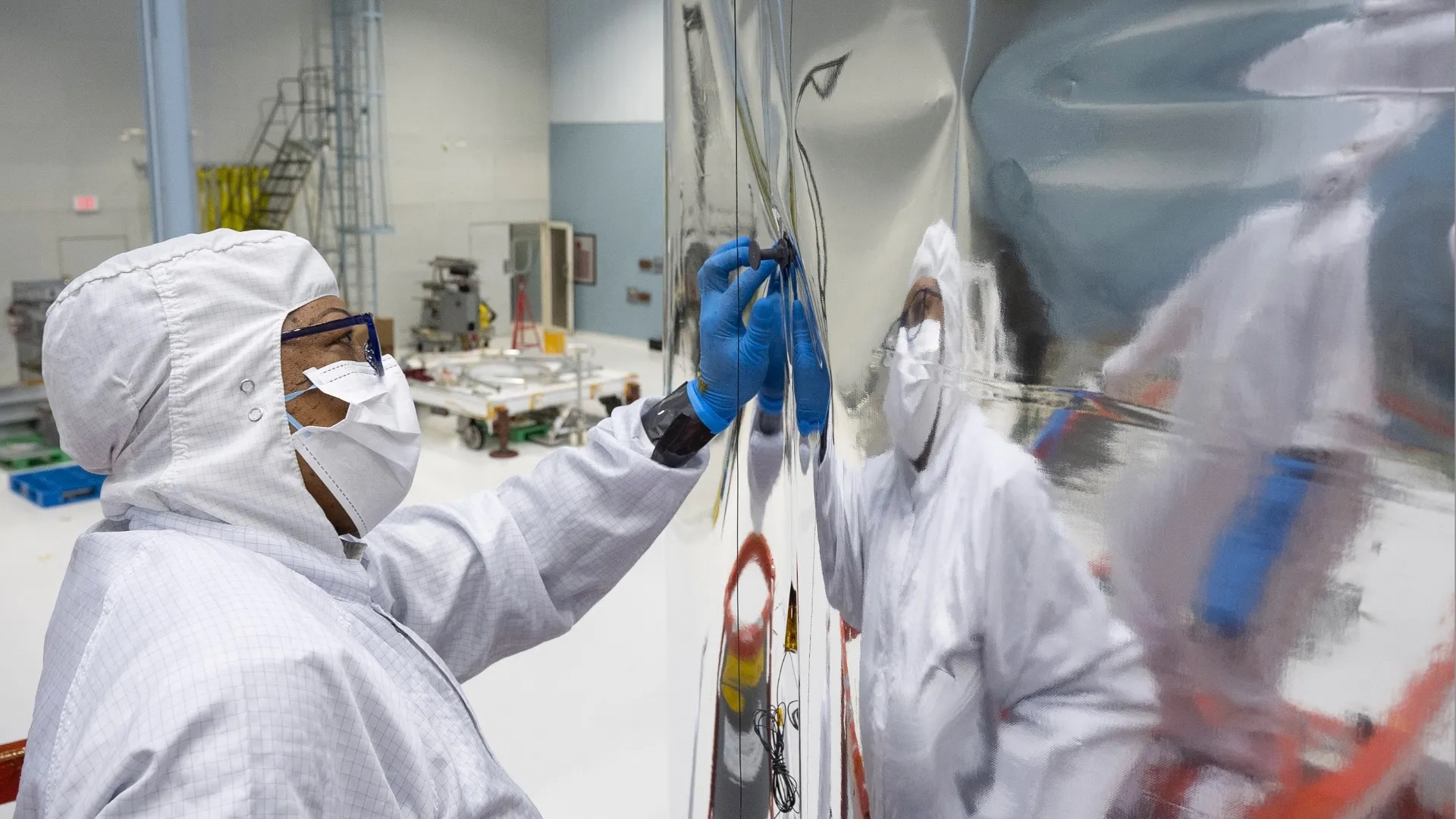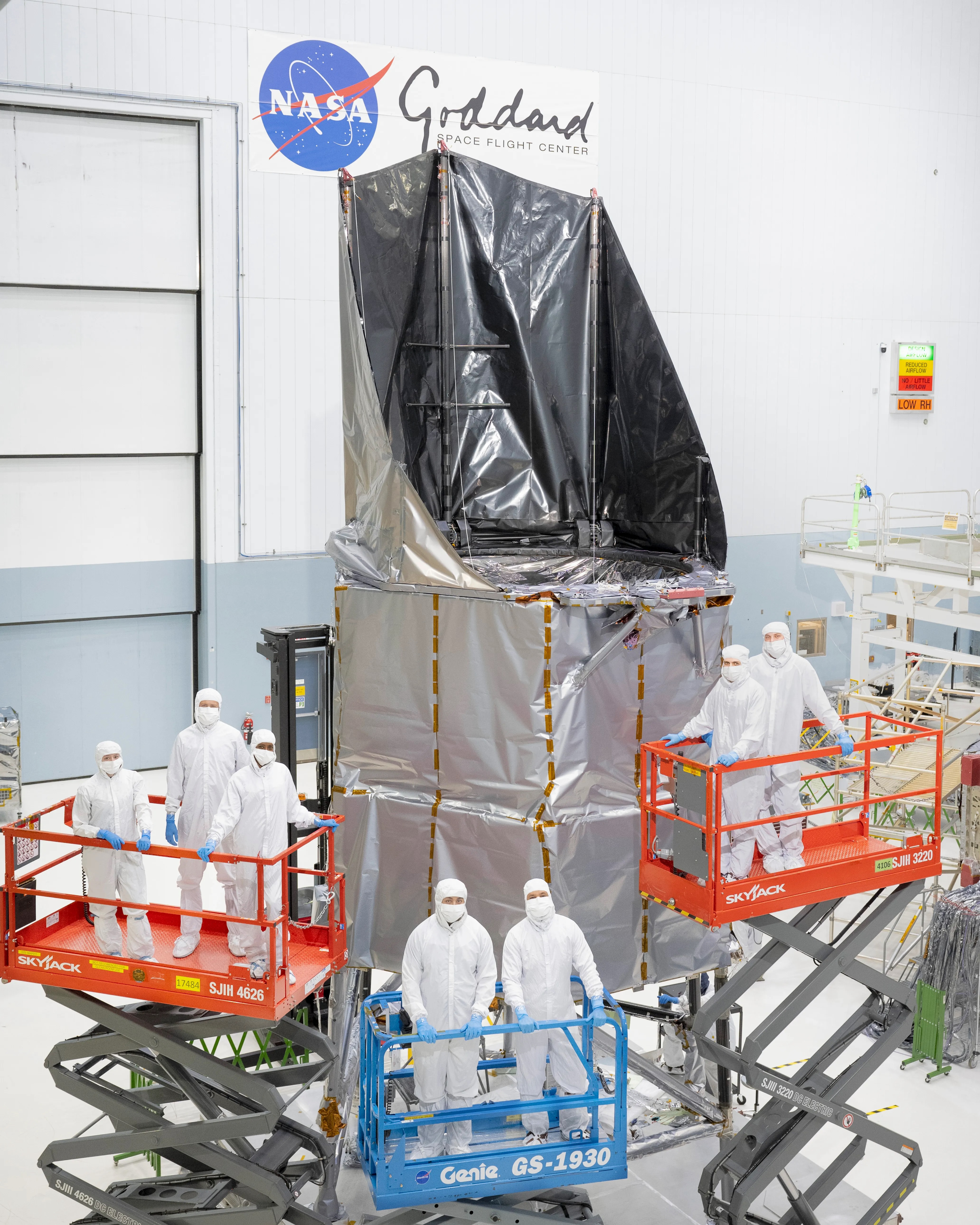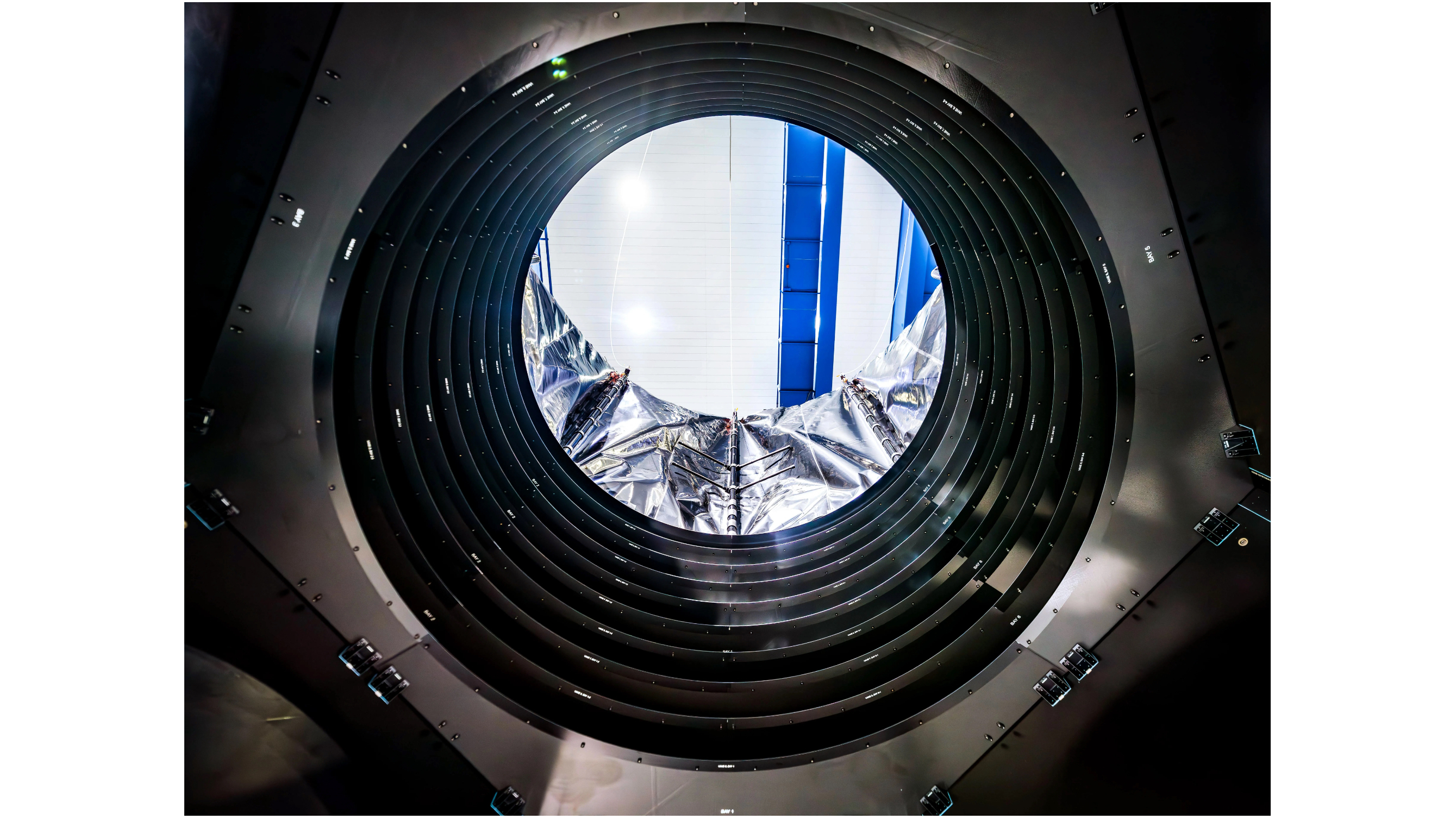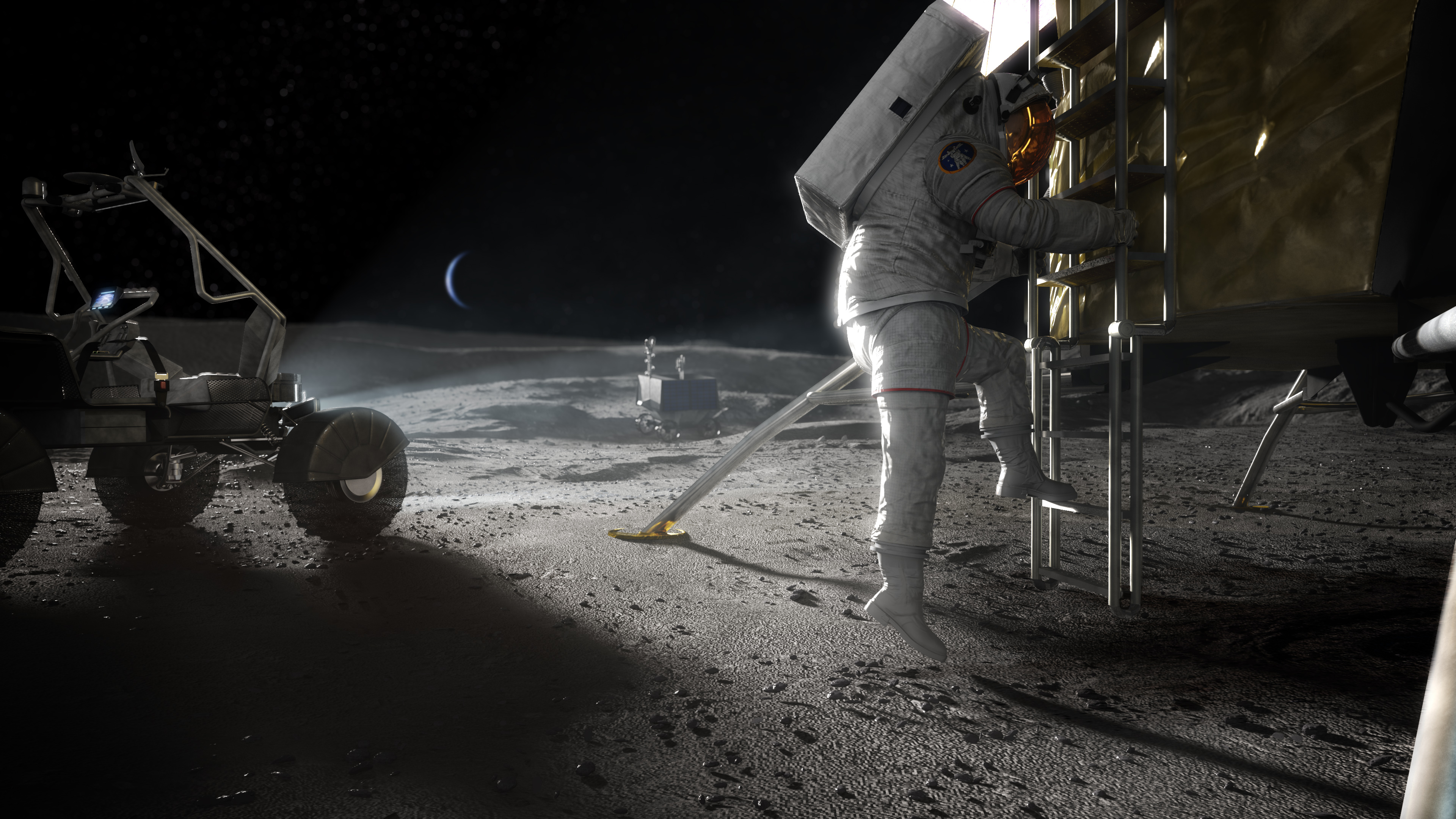NASA installs 'bulletproof' sunshade on powerful Nancy Grace Roman Space Telescope (photos)
"The successful integration was both a proud moment and a relief!"

The team working on NASA's Nancy Grace Roman Space Telescope has announced the successful installation of the observatory's sunshade.
This visor-like shade serves as a deployable aperture cover, blocking stray light that could interfere with observations or reduce the sensitivity of the infrared telescope, which is expected to launch no later than 2027.
The sunshade will operate like a pair of blackout blinds, which will allow Roman to pick up the faintest light from across the universe, "helping astronomers see dimmer and farther objects," NASA officials said in a statement.

The sunshade consists of two flexible layers of reinforced thermal blankets, differing from the rigid light shields used on the Hubble Space Telescope and other observatories. It is designed to remain folded during launch and deploy once Roman is in space.
Related: What is the Nancy Grace Roman Space Telescope?
"Three booms will spring upward when triggered electronically, raising the sunshade like a page in a pop-up book," NASA said in the statement.
The team integrated the sunshade onto Roman's outer barrel assembly, which is another structure designed to shield the telescope from stray light while also helping to maintain a stable temperature for optimal operation and protect it from micrometeoroid impacts.
Get the Space.com Newsletter
Breaking space news, the latest updates on rocket launches, skywatching events and more!
"We're prepared for micrometeoroid impacts that could occur in space, so the blanket is heavily fortified," said Brian Simpson, Roman's deployable aperture cover lead at NASA's Goddard Space Flight Center in Greenbelt, Maryland.
"One layer is even reinforced with Kevlar, the same thing that lines bulletproof vests," Simpson added. "By placing some space in between the layers, we reduce the risk that light would leak in, because it's unlikely that the light would pass through both layers at the exact same points where the holes were."
Engineers previously conducted thorough tests on both the sunshade and outer barrel assembly separately. Now that the two components have been integrated, they are undergoing another round of assessments. The team also tested the deployment of the sunshade following its installation.
"Since the sunshade was designed to deploy in space, the system isn't actually strong enough to deploy itself in Earth's gravity," said Matthew Neuman, a mechanical engineer working on Roman's sunshade at NASA Goddard. "So we used a gravity-negation system to offset its weight and verified that everything works as expected."

The next step is thermal vacuum testing, in which the combined components will be exposed to the temperature and pressure conditions of space to verify their functionality. After that, they will undergo a shake test to evaluate their ability to withstand the intense vibrations of launch.
"Roman is made up of a lot of separate components that come together after years of design and fabrication," said Laurence Madison, a mechanical engineer at NASA Goddard. "The deployable aperture cover and outer barrel assembly were built at the same time, and up until the integration the two teams mainly used reference drawings to make sure everything would fit together as they should. So the successful integration was both a proud moment and a relief!"
Roman will launch atop a SpaceX Falcon Heavy rocket and head to the sun-Earth Lagrange Point 2, a gravitationally stable spot about 900,000 miles (1.5 million kilometers) from our planet. From there, it will study a variety of cosmic objects and phenomena, from exoplanets to the effects of dark energy.
Join our Space Forums to keep talking space on the latest missions, night sky and more! And if you have a news tip, correction or comment, let us know at: community@space.com.

A chemist turned science writer, Victoria Corless completed her Ph.D. in organic synthesis at the University of Toronto and, ever the cliché, realized lab work was not something she wanted to do for the rest of her days. After dabbling in science writing and a brief stint as a medical writer, Victoria joined Wiley’s Advanced Science News where she works as an editor and writer. On the side, she freelances for various outlets, including Research2Reality and Chemistry World.
